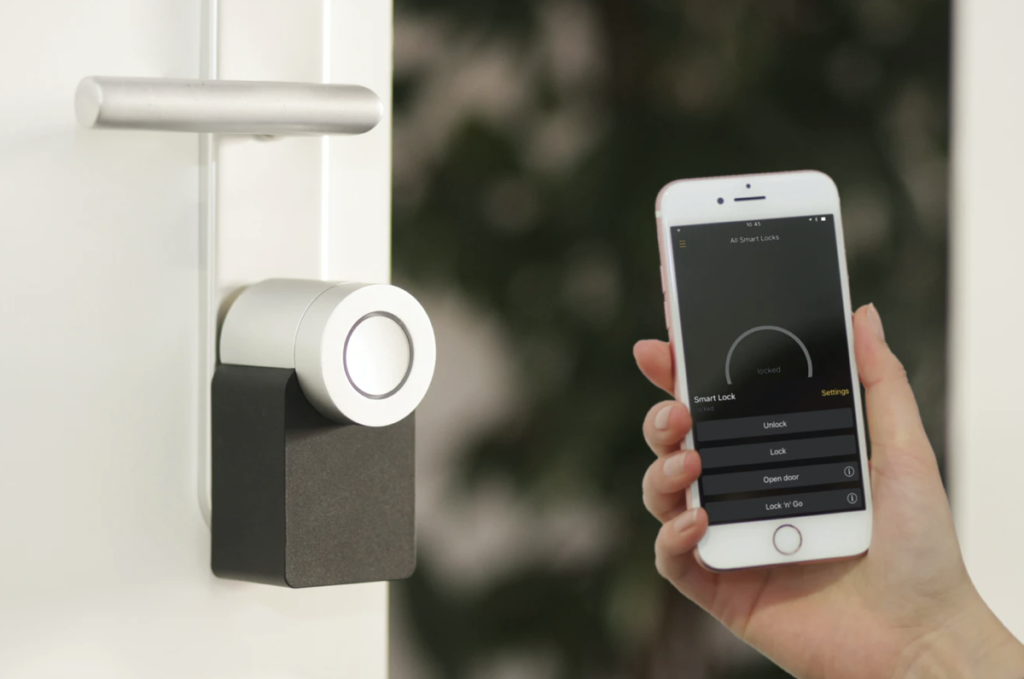Renters are increasingly interested in smart homes. One recent survey showed that 42% of respondents consider a home’s green credentials when looking for a rental property.
Consumers have welcomed smart home technology with open arms and experts suggest by 2022, 56% of UK homes will have at least one network-integrated device.
One of the easiest ways to tap into the green and clean rentals market is to enable Internet of Things (IoT) technologies and smart fixtures in your property. IoT technology affords tenants the ability to optimize their energy usage and offers greater control over energy consumption. It’s also a big drawcard for those who want to minimize their environmental impact.
Smart appliances run the gamut from intelligent thermostats (which can result in savings of up to £120 per year) to lights and everything in between. The smart speaker is now an integral part of many homes and centralizes other connected devices. Users can ask their Alexa or Google Nest to turn off appliances or they can operate everything remotely from a smartphone.
This high level of interconnectivity makes it easier than ever before for renters to cut chunks from their energy bills. One of the biggest energy drains in homes is devices running when not in use, with desktop computers in standby mode and plasma TVs as some of the biggest culprits.
Before integrated devices hit the market, the best way to deal with these small costs that add up quickly was to pull the cord or head to the mains. But this is cumbersome and not everyone remembers.
Besides the money-saving potential, tenants also have their eyes on environmental impact. A 2019 YouGov survey showed that more than three in five interviewees would switch to 100% renewable energy if the price remained reasonable, indicating the public’s widespread desire to reduce carbon footprints.
There are drawbacks to smart home technologies, though. Not least of which is the threat of personal data and identity theft. Or one device being put to use by hackers to access another connected device. If a fish tank can be used to hack into a major US casino’s record’s, it’s safe to say that all IoT devices on an unsecured home network should be viewed as vulnerabilities until properly secured.
While it might sound like the plot for a made-for-TV horror movie, digital home invasions are also a risk. Once another person has control over a property’s smart devices, cameras can start “talking” to inhabitants, thermostats can run wild, and lightswitches may seem to have a mind of their own. A report in the New York Times also illustrated how digital devices can be tools for abuse, particularly when controlled remotely.
As with any digital device, basic security measures are key to remedying the vulnerabilities smart home tools present. One of the simplest and most elegant ways to protect IoT home devices is through encryption.
Most of us already use a virtual private network (VPN) on our computers and smartphones, but to fully protect a smart home, a dedicated VPN router is a better option. Instead of having to manually link each WiFi-enabled device, a VPN router covers the entire network so that any device connected to it has encryption protection.
Smart homes make for smart investments when the proper security measures are in place. Tenants are actively seeking homes with green, energy-saving measures in place and are always interested in cutting down on their energy bills.
Property owners will find that smart homes attract more interest from potential tenants and may even command a higher monthly rent, an added bonus that more than offsets the initial outlay for the devices. Plus, with major tech companies including Amazon and Google placing a lot of emphasis on new IoT solutions for homes, the cost to go smart is falling.

